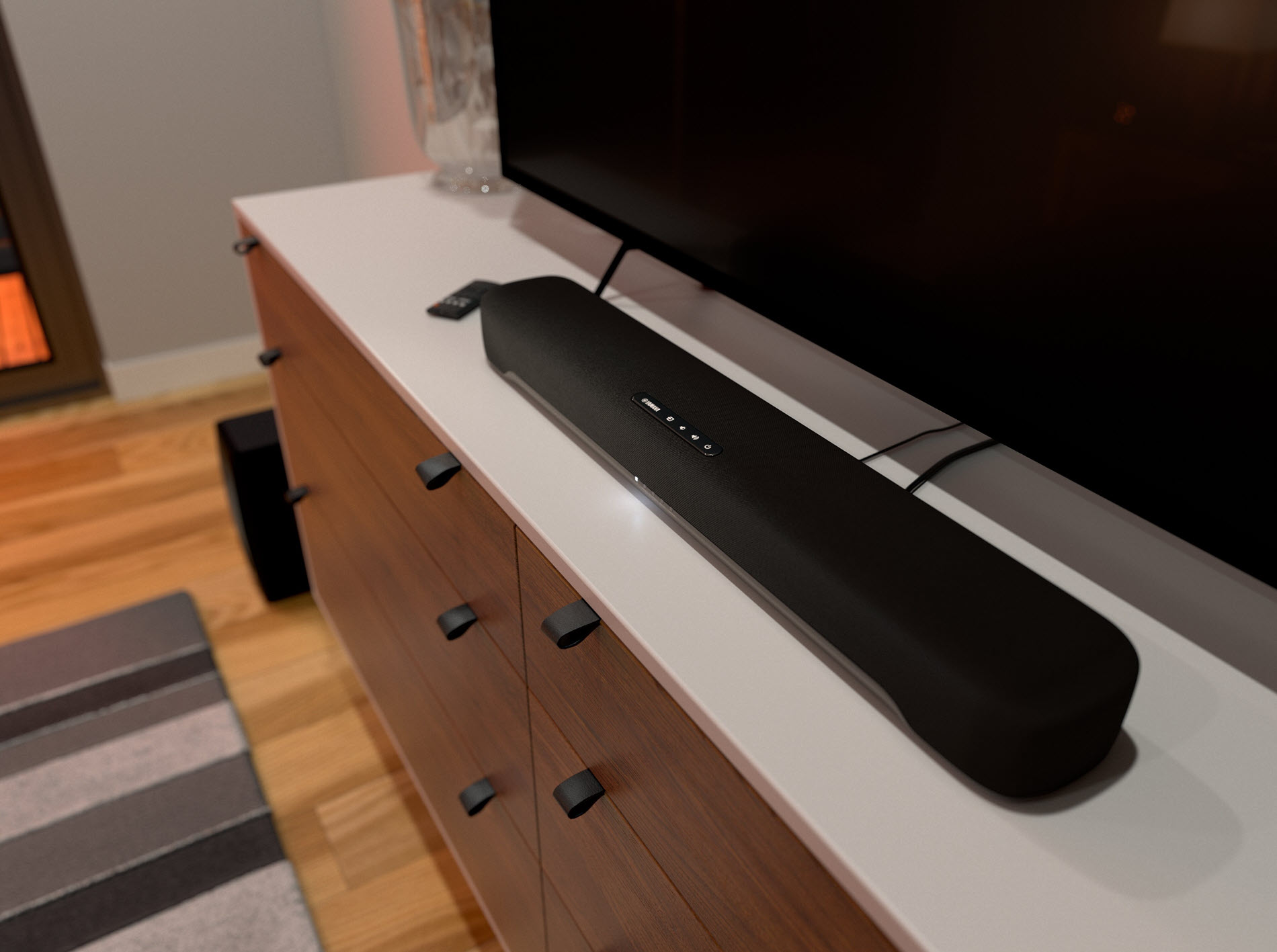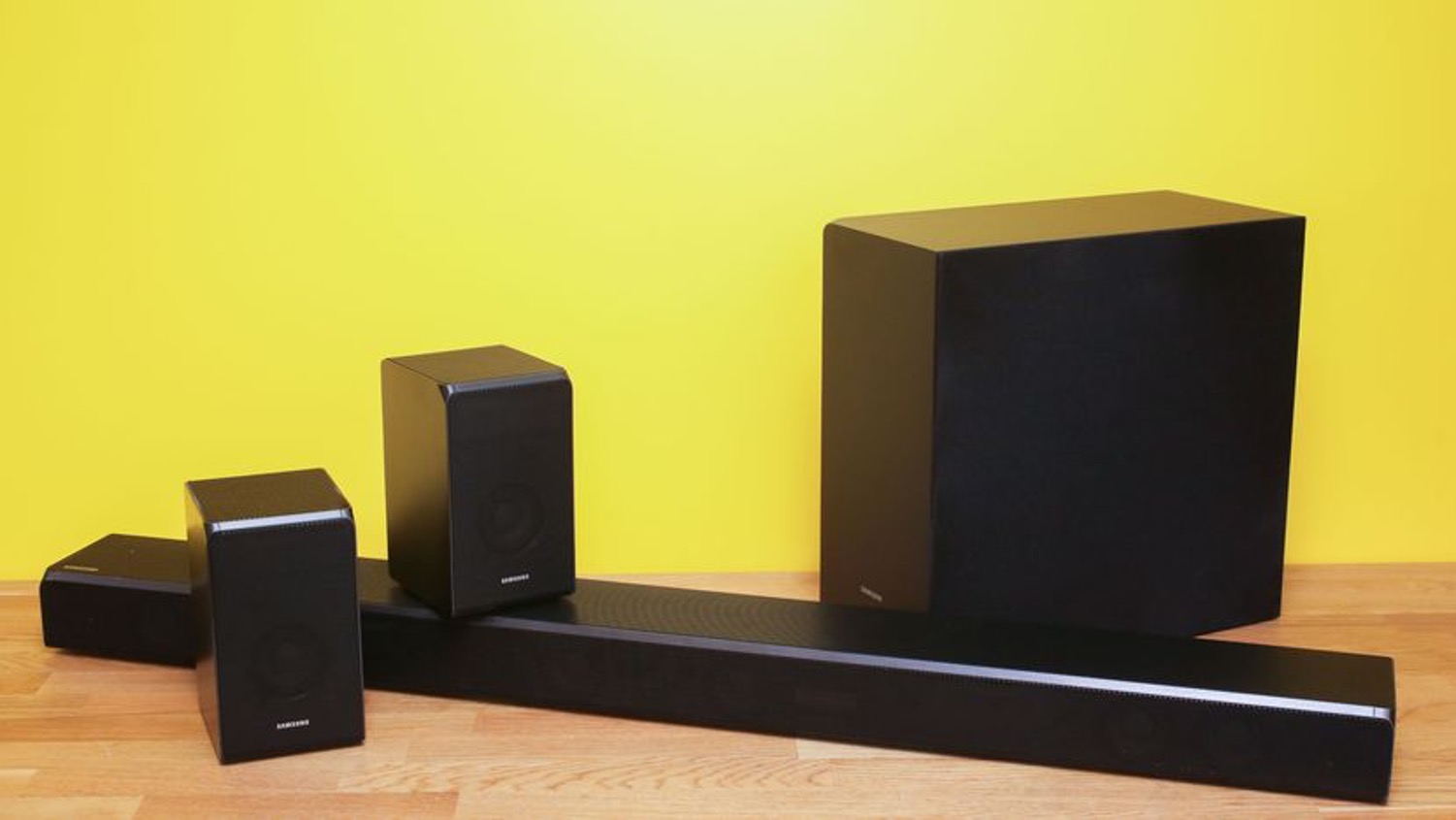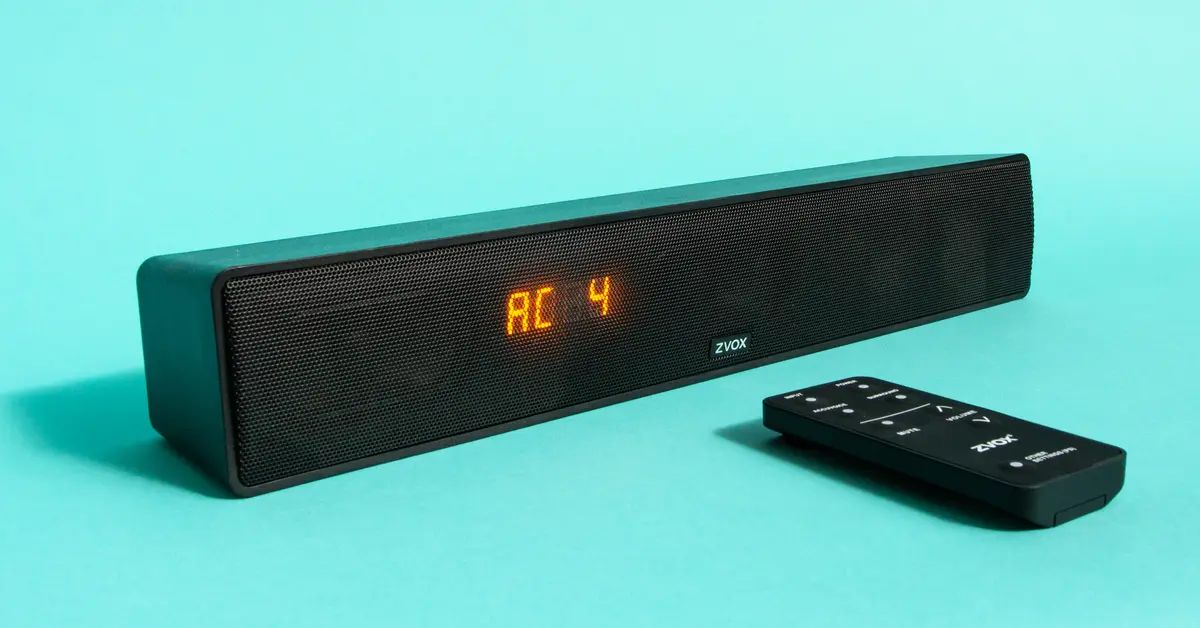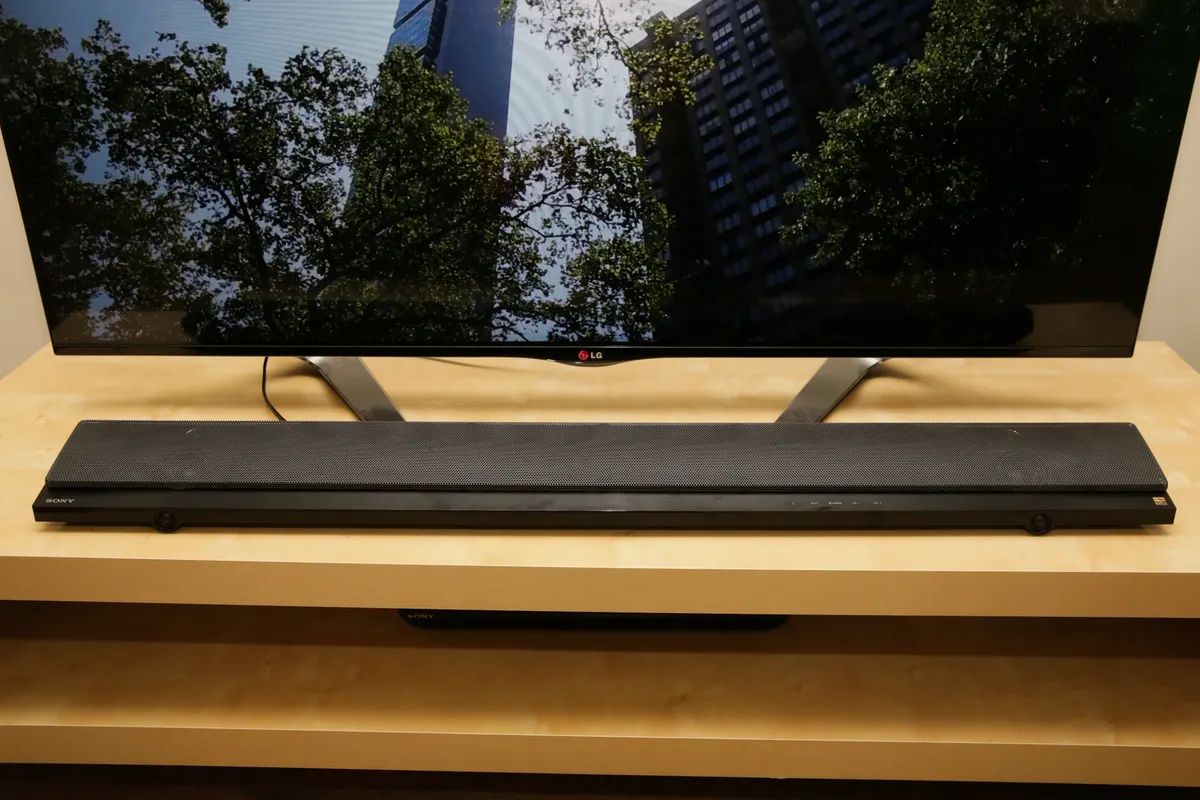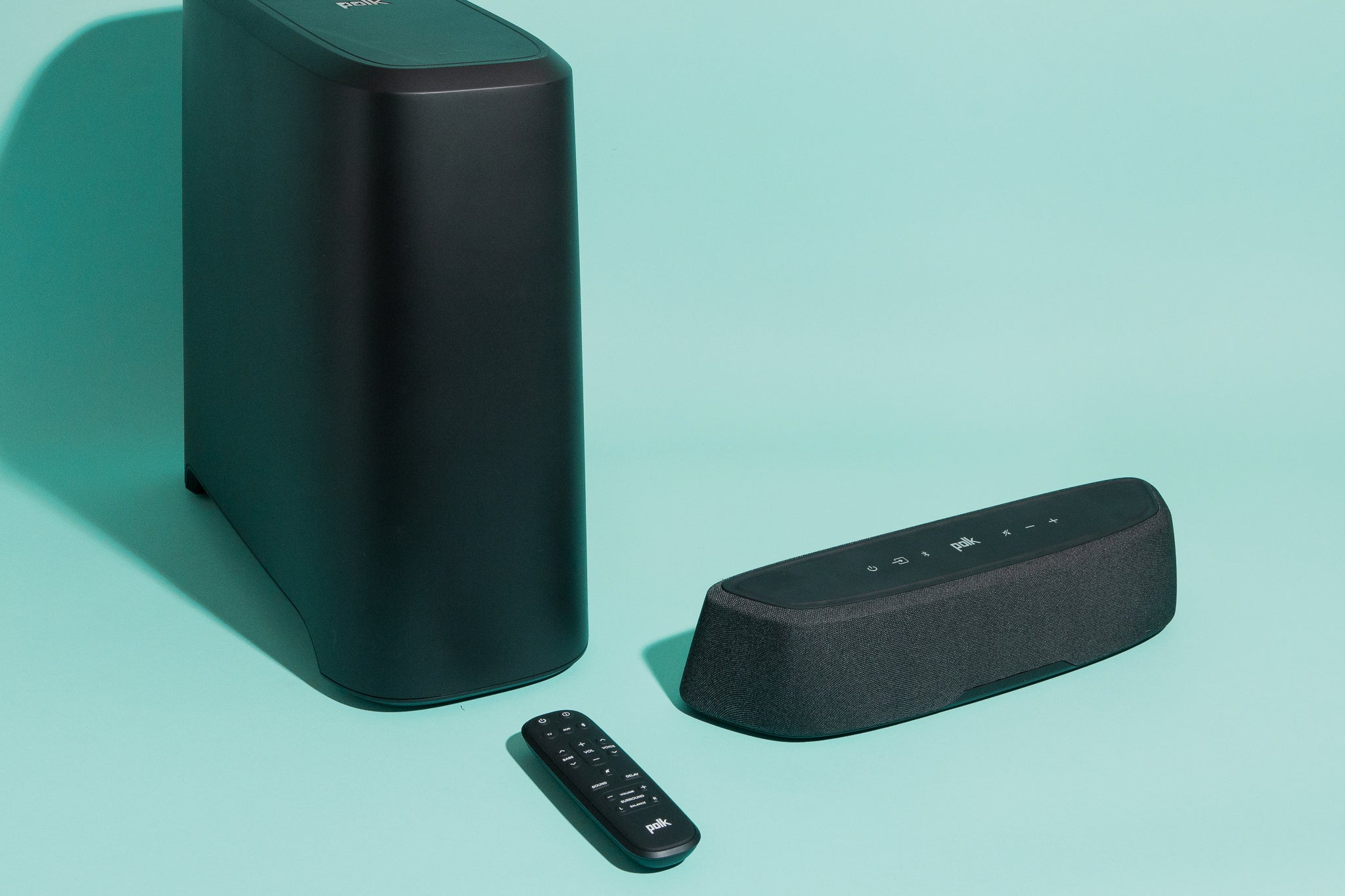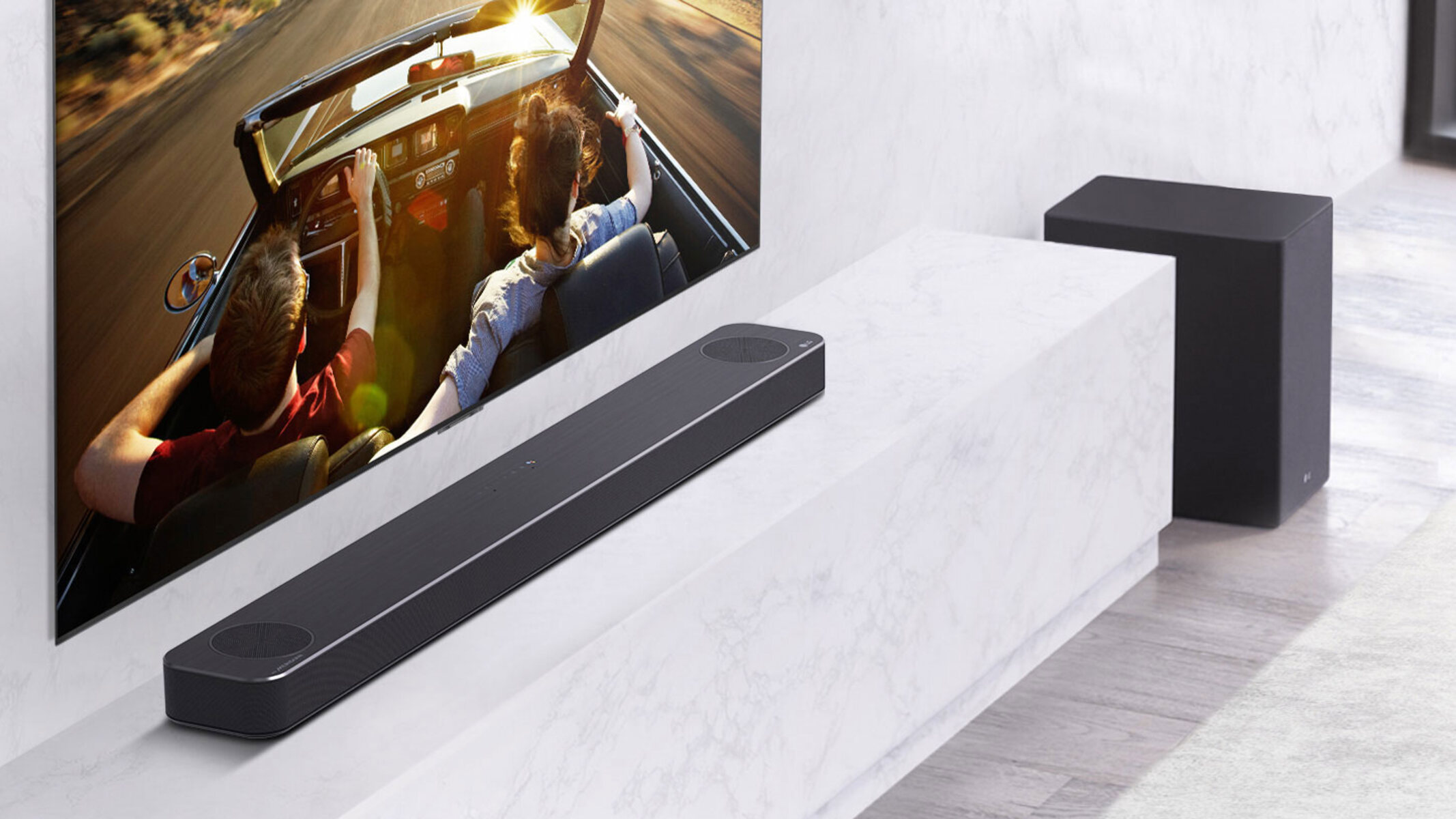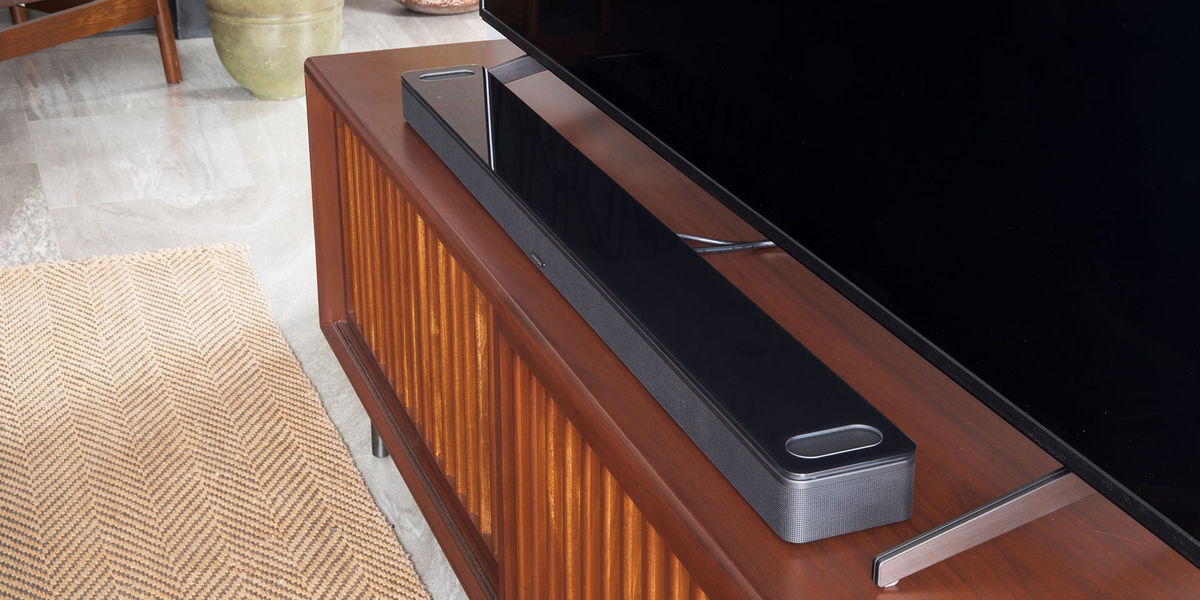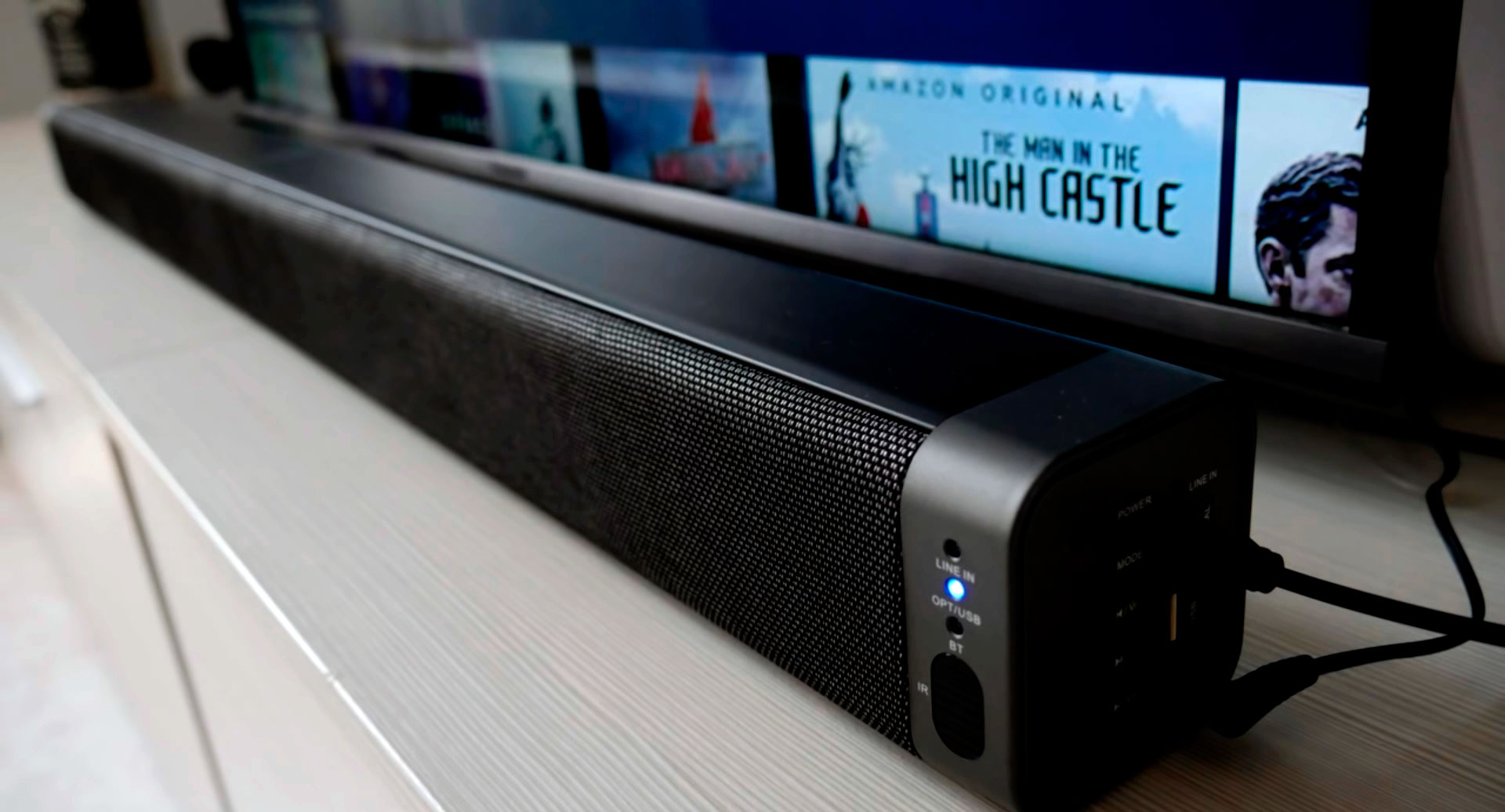Introduction
Welcome to our article on why your soundbar may sound low. If you’re experiencing issues with the sound output on your soundbar, you’re not alone. Many people face this problem, and it can be frustrating when you’re not getting the full audio experience you were expecting.
Soundbars have become a popular choice for enhancing the audio quality of TVs, providing a cinematic experience right in your living room. They are sleek, compact, and designed to deliver immersive sound without the need for a complicated setup.
However, sometimes you may notice that the sound coming from your soundbar is not as loud or clear as it should be. This can detract from the overall experience and leave you wondering why your soundbar is not performing at its best.
There are several factors that could contribute to low sound on your soundbar, such as incorrect audio settings, faulty connections, or even problems with the soundbar itself. In this article, we will explore the common reasons for low sound on a soundbar and provide you with practical troubleshooting tips to help you address the issue.
Whether you’ve just purchased a new soundbar or have been using one for a while, understanding the various features and settings can make a significant difference in optimizing the sound quality. By familiarizing yourself with these settings and taking necessary troubleshooting steps, you can ensure that your soundbar delivers the powerful and immersive audio experience you desire.
So, if you’re ready to dive into the world of soundbars and discover how to overcome low sound issues, let’s get started!
The Importance of Soundbars
Soundbars have revolutionized the way we experience audio in our homes. These sleek and compact devices are designed to enhance the sound quality of your TV, providing a more immersive and cinematic experience.
One of the main reasons why soundbars have gained popularity is their ability to reproduce high-quality sound without the need for complex speaker setups. Unlike traditional surround sound systems that require multiple speakers placed around the room, soundbars can deliver impressive audio performance from a single unit.
Soundbars are especially valuable for TVs with built-in speakers that may not deliver the best audio quality. By connecting a soundbar to your TV, you can instantly upgrade your audio experience and enjoy clearer dialogue, more defined sound effects, and a richer overall soundstage.
Another key advantage of soundbars is their space-saving design. With their slim and compact form, soundbars can be easily mounted on the wall or placed on a TV stand, taking up minimal space in your living room. This makes them an ideal choice for small apartments or rooms where a full surround sound system may not be practical.
Soundbars also offer versatility in terms of connectivity. Most soundbars come equipped with multiple input options, such as HDMI, optical audio, and Bluetooth, allowing you to connect various devices like your TV, gaming console, or smartphone. This flexibility enables you to enjoy high-quality audio from different sources, elevating your entertainment options.
Additionally, soundbars often feature additional features like built-in subwoofers or wireless surround sound capabilities. This means you can further enhance your audio setup without the need for additional components or messy cables.
Overall, soundbars are essential for anyone looking to enhance their home audio experience. They provide a convenient and space-efficient solution while delivering impressive sound quality. Whether you’re watching movies, playing games, or enjoying your favorite music, a soundbar can take your entertainment to the next level by providing immersive and dynamic audio.
Understanding Soundbar Features and Settings
Soundbars come with a variety of features and settings that allow you to customize the audio to your preferences. Understanding these features and settings is crucial in optimizing the performance of your soundbar and ensuring you get the best sound quality.
One important feature to be familiar with is the equalizer or EQ settings. The EQ settings allow you to adjust the audio frequencies to match your listening preferences. For example, if you prefer more bass, you can increase the low-frequency levels, or if you want clearer dialogue, you can boost the mid-range frequencies. Most soundbars offer preset EQ modes, such as Movie, Music, or Sports, which are optimized for specific types of content.
Another useful feature is the virtual surround sound technology. Soundbars with virtual surround sound capabilities can simulate a surround sound experience without the need for additional speakers. This technology uses audio processing algorithms to create a sense of spatial audio, making you feel like you’re surrounded by sound.
Many soundbars also come with a night mode feature, which is particularly useful for late-night viewing. Night mode reduces the dynamic range of the audio, making loud sounds softer and boosting quieter sounds. This helps to prevent disturbances to others in your household while still maintaining audible dialogue and important sound details.
Additionally, some soundbars offer connectivity options like Bluetooth and Wi-Fi. Bluetooth allows you to wirelessly stream audio from your smartphone, tablet, or other compatible devices. Wi-Fi connectivity offers advantages like multi-room audio playback and compatibility with voice assistants, enabling you to control your soundbar with voice commands.
It’s important to note that soundbars may also have different audio modes or settings related to the type of content you’re watching. For example, there may be a dialogue enhancement mode that prioritizes clarity for spoken words, or a music mode that brings out the best in music playback.
Understanding and experimenting with these various features and settings can greatly enhance your soundbar experience. Take the time to explore and adjust these settings to find the audio configuration that suits your preferences and the content you’re enjoying.
Common Reasons for Low Sound
If you’re experiencing low sound from your soundbar, there are several common culprits that could be causing this issue. Understanding these reasons can help you pinpoint and resolve the problem, ensuring you get optimal sound quality.
One possible reason for low sound is incorrect audio settings. It’s possible that the audio output is set to a low volume level or that certain sound enhancement features, such as virtual surround sound or EQ settings, are not properly configured. Double-check the settings on both your soundbar and TV to ensure they are appropriately adjusted for the desired sound output.
Another potential reason is a problem with the source device or content you’re playing. If the volume on your TV or external device is set too low, it can affect the sound output of your soundbar. Make sure to check the volume levels on your source device and adjust them if necessary. Additionally, some streaming services or media players may have their volume levels capped, so be sure to check the settings within those applications as well.
Faulty connections can also contribute to low sound. Ensure that all cables between your soundbar and the TV or other devices are securely plugged in and undamaged. Loose or damaged cables can result in weak or intermittent audio signals, resulting in lower sound levels. Try disconnecting and reconnecting the cables or using different cables to rule out any connection-related issues.
Sometimes, the placement of the soundbar can impact the sound output. If your soundbar is placed too far away from your seating area or obstructed by objects, it may result in diminished sound quality. Ensure that the soundbar is positioned correctly and unobstructed so that the audio can reach you without any hindrances.
In some cases, the soundbar itself may be the issue. If you’ve tried adjusting settings, checking connections, and ensuring the placement is optimal, but the sound remains low, there could be a problem with the soundbar’s internal components. Reach out to the manufacturer’s customer support for further assistance or consider contacting a professional technician to diagnose and repair any hardware-related issues.
By identifying and addressing these common reasons for low sound on your soundbar, you can take the necessary steps to restore the audio quality. Troubleshoot each potential cause systematically until you find the root of the problem, and don’t hesitate to seek professional help if needed.
Checking Audio Settings on Your Soundbar
When experiencing low sound from your soundbar, one of the first steps to take is to check the audio settings on your device. Properly configuring these settings can significantly impact the sound output and help resolve any issues you may be facing.
Start by accessing the audio settings menu on your soundbar. This can usually be done through the soundbar’s remote control or the buttons on the device itself. Look for options such as “Audio,” “Sound,” or “Settings.”
First, verify that the volume level is appropriately set. Ensure that the volume is not too low and that it is not muted. Adjust the volume level to a comfortable level and test the sound again to see if there is any improvement.
Next, check the sound modes or presets available on your soundbar. Different soundbars offer various presets like Movie, Music, Game, or Voice. These presets are designed to optimize the audio settings for specific types of content. Experiment with different modes to find the one that delivers the desired sound experience for your current activity.
Many soundbars also come with an equalizer (EQ) feature, allowing you to adjust the sound frequencies to your liking. Explore the EQ settings and try boosting or reducing specific frequency ranges such as bass, mid-range, or treble. This customization can help optimize the audio output to your preferences and improve the overall sound quality.
Additionally, if your soundbar has virtual surround sound capabilities, ensure that this feature is enabled. Virtual surround sound can create a more immersive audio experience by simulating a surround sound setup without the need for additional speakers. Activate this feature in the settings menu to enhance the spatial aspect of the sound and make it feel like it’s coming from multiple directions.
Lastly, if your soundbar has a night mode feature, consider enabling it if you’re watching movies or TV shows late at night. Night mode reduces the dynamic range of the audio, making loud sounds softer and boosting quiet sounds. This helps to maintain audibility while minimizing disturbances in your environment.
By thoroughly checking and adjusting the audio settings on your soundbar, you can fine-tune the sound output according to your preferences and potentially address any low sound issues you may be encountering. Take the time to explore the available settings and experiment with different options until you find the best configuration for your audio needs.
Adjusting the Volume on Your Soundbar
When dealing with low sound from your soundbar, one of the simplest yet often overlooked solutions is to adjust the volume settings. Understanding how to properly adjust the volume on your soundbar can significantly improve the audio output and enhance your overall listening experience.
The volume control on your soundbar can typically be adjusted using either a physical button located on the device or through the remote control that came with it. Locate the volume controls and familiarize yourself with their functions.
If you find that the sound is too low, start by gradually increasing the volume using the dedicated volume controls. Ensure that the soundbar is not in mute mode and that the volume level is at an appropriate level for your listening preferences.
It is worth noting that the optimum volume level may vary depending on the content you are watching or listening to. For example, movies or TV shows with dialogue-heavy scenes may require a higher volume for clear speech clarity, whereas music playback may require a balanced volume across all frequencies.
If your soundbar has a separate subwoofer, ensure that its volume or bass control is properly adjusted as well. A subwoofer enhances the low-frequency sounds, so if the volume of the subwoofer is too low, it can contribute to an overall perception of low sound. Adjust the subwoofer volume to achieve a well-balanced audio output.
If you’re experiencing inconsistent volume levels from different sources, such as switching between TV channels or inputs like gaming consoles or streaming devices, it could be due to differences in the audio output settings of those sources. In these cases, check the audio settings on each source device and make sure they are properly configured for optimal sound output. Some devices may have volume leveling options or audio normalization features that can help maintain a consistent volume level across different sources.
Remember, it’s always essential to listen at a comfortable volume level to protect your hearing. Gradually increase the volume until you find a level that provides an enjoyable listening experience without causing discomfort.
By adjusting the volume settings on your soundbar and ensuring that the levels are optimized for your preferences, you can effectively address low sound issues and enjoy the full potential of your soundbar’s audio capabilities.
Troubleshooting Connection Issues
If you are experiencing low sound from your soundbar, connection issues may be the cause. A faulty or incorrect connection can lead to diminished sound quality or even no sound at all. Fortunately, troubleshooting connection issues is usually straightforward and can help you resolve the problem.
First, check the cables connecting your soundbar to the audio source, typically your TV. Ensure that the cables are securely inserted into the appropriate ports on both the soundbar and the TV. Loose or improperly connected cables can result in weak or intermittent audio signals, leading to low sound levels. Reconnect the cables if necessary and ensure they are seated tightly.
If you are using HDMI as your audio connection, make sure the HDMI cable is of high quality and supports audio transmission. Some HDMI cables are designed for video only and may not carry audio signals. Consider using an HDMI cable labeled as “High-Speed” or “High-Speed with Ethernet” to ensure proper audio transmission.
If your soundbar utilizes an optical audio connection, check that the optical cable is correctly inserted into the soundbar’s optical input and the corresponding optical output on the TV. Optical cables can be sensitive to dust or debris, so inspect both ends of the cable for any obstructions and clean them if necessary.
In case you are using a wireless connection, such as Bluetooth or Wi-Fi, make sure the soundbar and the source device are properly paired. Go through the pairing process again if required and ensure that the devices are within the recommended range for a stable connection.
Interference from other devices can also impact the sound quality of your soundbar. Keep electronic devices such as routers, cordless phones, or microwaves away from the soundbar, as they can emit signals that interfere with the audio signal. Ideally, separate the soundbar from other wireless devices to minimize potential interference.
If you have other audio equipment connected to your TV, such as a set-top box or gaming console, verify that they are set to output audio through the soundbar. Some devices may default to the TV’s built-in speakers, so adjust the audio settings on each device to route the sound to the soundbar instead.
If the connection issues persist and you have tried the above troubleshooting steps, consider trying alternative cables or testing the soundbar on a different TV or audio source. This can help determine if the problem lies with the soundbar or with the specific audio source or TV.
By troubleshooting connection issues, you can identify and resolve any problems that might be causing low sound output from your soundbar. Ensuring proper and secure connections between the soundbar and audio source is crucial to obtaining optimal audio quality.
Enhancing Sound Quality with EQ Settings
Customizing the EQ (equalizer) settings on your soundbar can significantly enhance the sound quality and tailor the audio to your specific preferences. The EQ settings allow you to adjust the balance of different frequencies, such as bass, mid-range, and treble, to optimize the sound output according to your preferences and the content you are enjoying.
Access the EQ settings on your soundbar either through the device’s menu or a dedicated button on the remote control. Most soundbars offer pre-set EQ modes, such as Movie, Music, Game, or Voice, which are tailored for specific types of content. These presets adjust the EQ settings to enhance certain aspects of the audio, such as emphasizing dialogue or boosting bass for movies and TV shows, or highlighting high frequencies for music playback.
Experiment with the different pre-set modes to find the one that best suits your current activity. For example, when watching action-packed movies, the Movie preset might provide a more immersive experience with enhanced low-frequency effects. Conversely, the Music or Voice preset may be more suitable for enjoying music or improving dialogue clarity during TV shows or podcasts.
If the pre-set EQ modes don’t quite meet your preferences, many soundbars also offer manual EQ adjustments. These settings allow you to independently control the levels of various frequency bands to fine-tune the sound according to your liking. Whether it’s increasing the bass for a more impactful audio experience or boosting the mid-range for clearer vocals, adjusting the EQ settings can help tailor the sound output to your personal taste.
Take some time to experiment with the EQ settings and listen to different types of audio content while making adjustments. Start by making small increments or decrements to specific frequency bands and listen for the impact it has on the sound. Remember to give your ears some time to adjust to the changes before making further adjustments.
It’s important to note that the optimal EQ settings can vary depending on the individual and their listening environment. Factors such as the room acoustics, speaker placement, and personal preferences all come into play. Therefore, don’t be afraid to experiment and find the EQ settings that deliver the best audio experience for you.
By utilizing the EQ settings on your soundbar and fine-tuning the frequencies to your liking, you can enhance the sound quality and create a personalized audio experience tailored to your preferences.
When to Seek Professional Help
While many soundbar issues can be resolved through troubleshooting and adjusting settings, there may be instances where seeking professional help becomes necessary. If you have tried various troubleshooting steps and are still experiencing low sound or other audio-related problems, it might be time to consider professional assistance.
One situation where professional help is recommended is when you encounter hardware-related issues. If you suspect that there might be a defect or malfunction with your soundbar’s internal components, such as the speakers or amplifier, it’s best to reach out to the manufacturer’s customer support or a certified repair center. They have the expertise and knowledge to diagnose and repair any hardware problems.
Professional help is also advisable when you’re unable to resolve connection issues. If you’ve carefully checked and reconnected all cables, ensured proper pairing for wireless connections, and followed all troubleshooting steps, but the soundbar still fails to produce adequate sound, it’s wise to consult an expert. They can examine the connections and conduct further tests to identify the root cause of the problem.
In some cases, software or firmware updates may be required to address certain issues. If you’re unsure about how to update the soundbar’s software or firmware, or if you encounter errors during the update process, it’s recommended to seek assistance from the manufacturer or authorized service centers. They can guide you through the update procedure and ensure its successful completion.
If you’ve exhausted all possible troubleshooting steps and still cannot achieve satisfactory sound quality, it may be worth considering upgrading to a more advanced sound system or consulting with an audio professional. They can provide expert advice on selecting the right audio equipment for your needs, help with proper installation and calibration, and offer additional audio optimization techniques to maximize your audio experience.
Remember, professional assistance can save you time and frustration in trying to resolve complex soundbar issues on your own. If you’ve tried all possible solutions and are still unsatisfied with the sound quality or experiencing persistent problems, don’t hesitate to reach out to professionals who specialize in audio equipment.
By seeking professional help when needed, you can ensure that any underlying issues with your soundbar are accurately diagnosed and promptly addressed, ultimately restoring optimal audio performance.
Conclusion
Having low sound from your soundbar can be frustrating, but with the right knowledge and troubleshooting steps, you can address the issue and enjoy optimal audio quality. In this article, we have explored various factors that may contribute to low sound, including incorrect audio settings, connection issues, and hardware problems.
We emphasized the importance of understanding your soundbar’s features and settings, such as EQ options, sound modes, and virtual surround sound technology. Adjusting these settings can greatly enhance the audio output and tailor it to your preferences and the content you’re enjoying.
We also discussed the significance of checking and adjusting the volume levels on your soundbar, as well as troubleshooting connection issues. By ensuring secure connections and proper cable placement, you can improve the sound clarity and prevent low sound issues.
Moreover, we highlighted the potential benefits of seeking professional help when necessary, particularly for hardware-related issues or complex troubleshooting. Professional assistance can provide expert guidance, diagnose underlying problems, and offer solutions tailored to your specific soundbar and setup.
In conclusion, obtaining optimal sound from your soundbar requires a combination of understanding its features, adjusting settings, and troubleshooting potential issues. By applying the information and tips outlined in this article, you can overcome low sound problems and enjoy a superior audio experience. So, don’t let low sound hold you back – unleash the full potential of your soundbar and immerse yourself in rich, high-quality audio.







